The care and feeding of a territory
Within days of the Cooperative Extension Service’s beginnings in Alaska, two pioneering agents set off on an ambitious field trip to bring practical skills to residents of the territory.
Extension became a department of the Alaska Agricultural College and School of Mines on July 1, 1930. Five days later, home economist Lydia Fohn-Hansen ’59 (Hon.) and George Gasser ’55 (Hon.), the assistant director of agriculture, left on the first Alaska Extension field trip. Traveling by train, plane and boat, they visited Matanuska, Eklutna, Anchorage, Seward, Juneau, Sitka, Ketchikan, Wrangell and Cordova.
During the seven-week trip, Fohn-Hansen organized 4-H youth and home ec clubs, and she and Gasser surveyed Alaskans about the types of information they needed. Afterward, Fohn-Hansen noted that the Extension service had an unusual opportunity to “point out methods in farming and housekeeping adapted to Alaska and to ameliorate some of the hardships of pioneering.”
A three-month trip followed in September, when Fohn-Hansen returned alone to the same communities, plus Petersburg and Skagway.
Congress created the Cooperative Extension Service in 1914 to provide useful and practical information in the areas of agriculture, home economics and rural energy. The goal was to spread research-based information from land-grant colleges such as the University of Alaska Fairbanks.
Although Extension began in 1914 in most areas of the United States, Congress did not extend provisions of the authorizing legislation, the Smith-Lever Act, to Alaska until 1930. Extension had a modest start in the territory, with an unpaid director (AACSM President Charles Bunnell) and the two part-time agents, Fohn-Hansen and Gasser.
For five years, Fohn-Hansen served as the sole Extension home economist. She energetically traveled the territory, showing Alaskans how to can, cook fish and vegetables, sew, and make gloves and rugs. She wrote bulletins about nutrition, using berries, making patterns, knitting gloves and cooking Alaska foods. Because of a limited travel budget, she sent out a newsletter to Alaskans with practical advice. Circulation topped 1,000 homemakers by 1935.
“It was exciting work and I enjoyed every minute of it,” Fohn-Hansen told an interviewer in 1974. “It was pioneering, getting into communities, trying to explain what Extension Service was all about and trying to get people involved in programs that would make for better living in Alaska.”
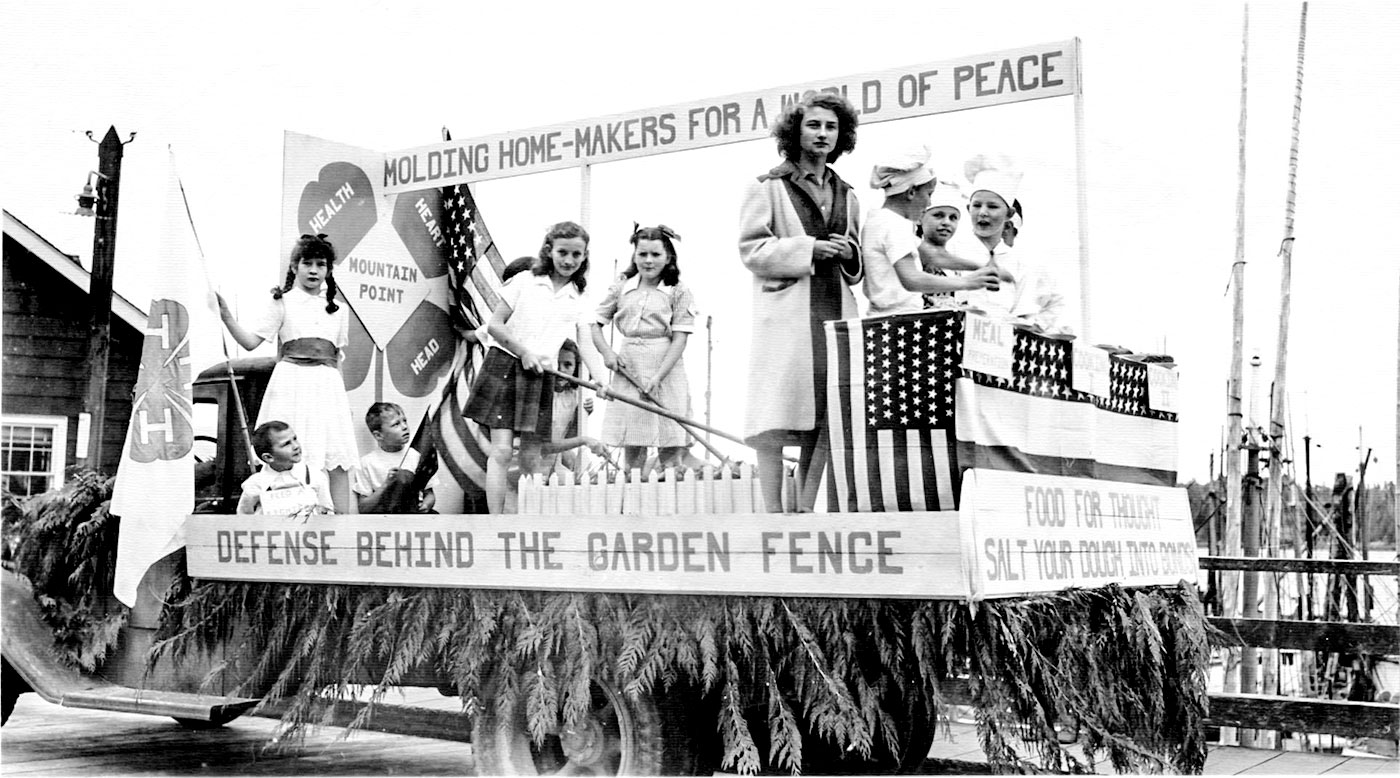
4-H Club members in Southeast Alaska promote gardening during World War II. The Cooperative Extension Service helped support “victory gardens” and “victory canners” during World War II.
The Matanuska Colony
Alaska Extension came of age in 1935, when it helped 200 families newly arrived from depressed farming areas in Minnesota, Michigan and Wisconsin. The government-sponsored Matanuska Colony was part of a New Deal experiment to resettle families on farms in the Matanuska Valley, just north of Anchorage. Many families lived in canvas tents while their homes were built and land was cleared.
Fohn-Hansen set up shop at the Matanuska Experiment Station in July 1935 and then moved into a tent in August. She stayed until late November to help the colonists adapt to their new home. Extension Director Ross Sheely also came. (He later resigned the directorship to continue working with the colonists.)
They needed a lot of help because of what Fohn-Hansen called “absentee planning.”
“The people in Washington sitting at a desk had no idea of what Alaska was like,” she said.
In a 1935 report, Fohn-Hansen said her tent served as a distribution center for bulletins on Alaska living, a market for handicrafts the women made and an unofficial employment agency for women looking for work.
Fohn-Hansen traveled to the 10 tent camps scattered around Palmer and demonstrated how to sew, cook, can, weave and spin. She led berry-picking expeditions. She also organized home demonstration clubs for the women and 4-H clubs for youths.
Among the colonists she helped were Bill and Viola Lentz, who had grown up on small farms in Wisconsin and arrived in May 1935 with an 8-month-old daughter.
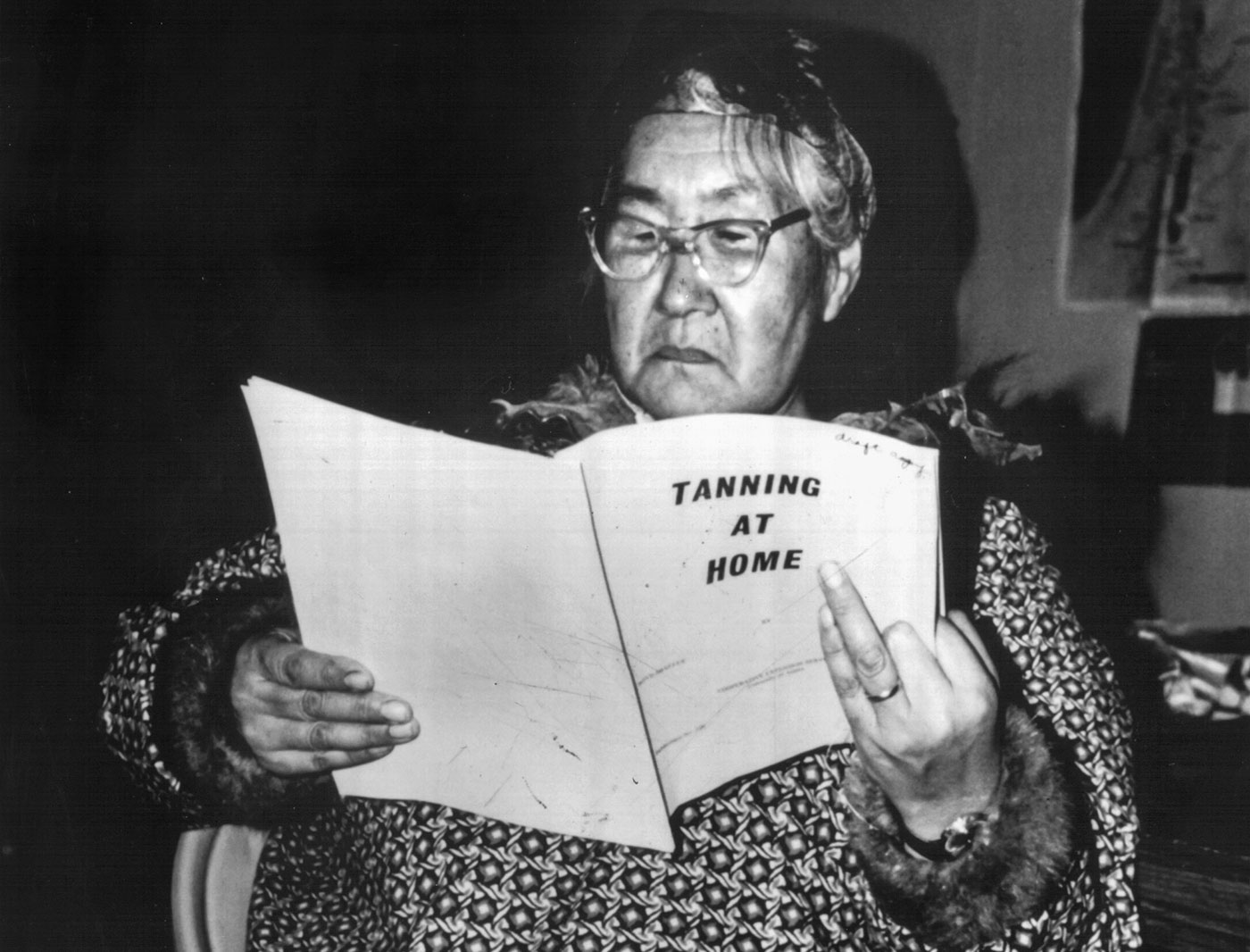
An unidentified woman reads a Cooperative Extension Service publication during a hide-tanning workshop offered sometime around 1980.
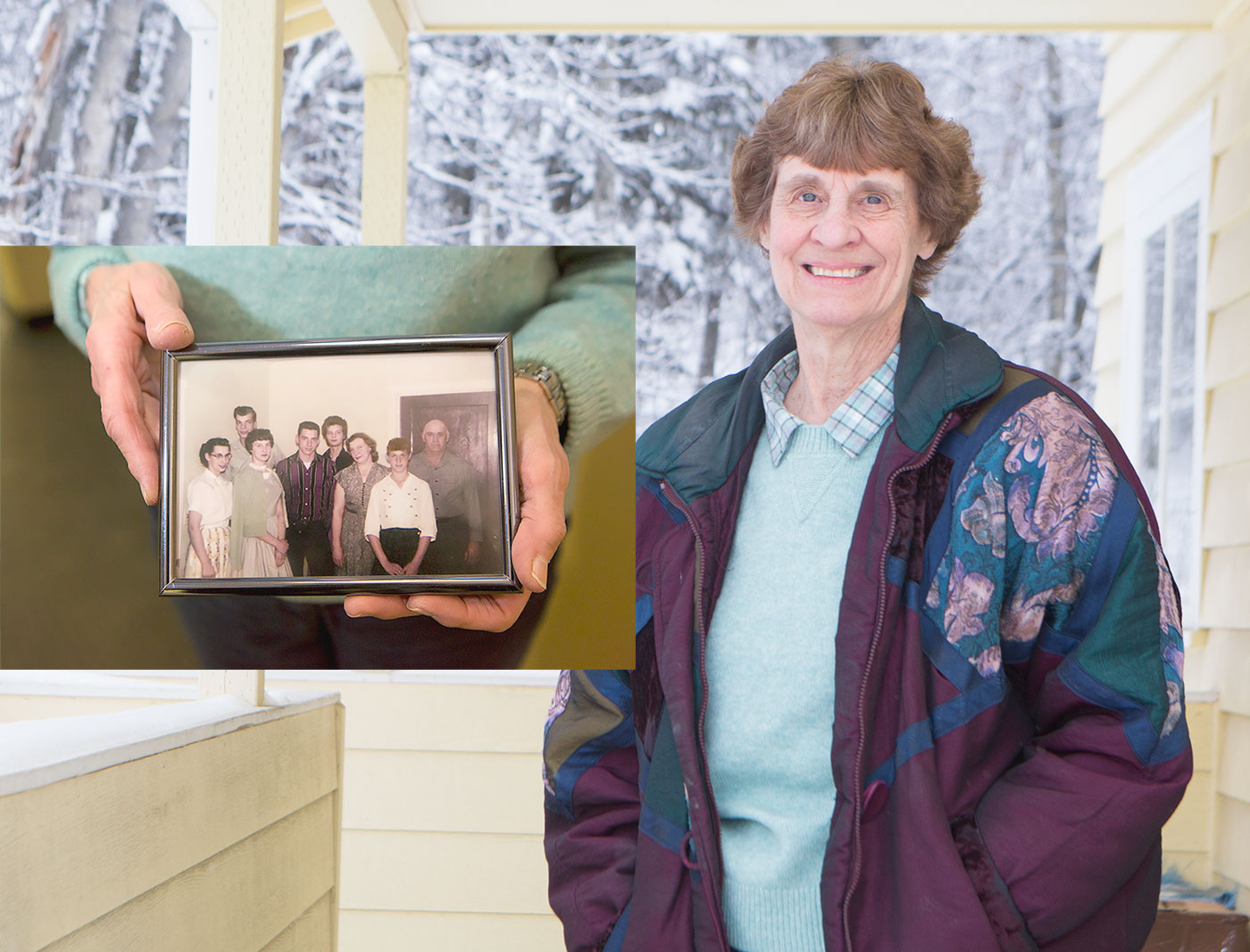
Barbara Thomas stands outside the Palmer Extension Mess Hall building. In the inset, Thomas holds a family photo featuring herself, second from right. Her parents, Viola and Bill Lentz, standing to each side of her, came to Alaska in May 1935 as participants in the Matanuska Colony. To learn about living in the North, Viola Lentz took classes offered by the Cooperative Extension Service. Today, Thomas continues to take similar classes.
Viola Lentz had been living with in-laws before she came to Alaska at age 21. She loved the new place, said Barbara Thomas, a daughter born 10 years later. “It was the first time she was alone with her husband and the baby,” said Thomas, who today lives in Wasilla.
The family stayed in a tent until October. Viola Lentz joined a homemakers’ club that participated in all-day workshops at the experiment station. “Thousands of cans of salmon they canned that first summer,” Thomas said.
Thomas said Fohn-Hansen and subsequent agents taught her mother a lot, including how to use berries, can vegetables and wild game, and preserve eggs.
Like many of the colonists, the Lentzes produced and sold vegetables, livestock and eggs. They later went into dairy farming.
The homemaker club helped with community needs, such as sewing curtains for the gymnasium stage and finishing school desks. It also provided an important support group for the women, especially in the early days, Thomas said. Although the family farm was sold around 1970, her mom remained active in the club until she was in her 80s.
Thomas joined a club when she and her husband returned to Alaska in 1993. She takes classes from the district home economist in Palmer and from other agents during an annual conference of homemakers, whose clubs comprise the Alaska Association for Family and Community Education. The conference grew out of the annual gathering of homemakers that Fohn-Hansen began in the 1940s at the University of Alaska in Fairbanks.
“The Extension Service is very important in the valley,” Thomas said. “It’s farm country, and it’s still rural enough for most people to have a garden.”

Fourteen-year-old Ainsley Smith, left, and her sister McKenna, 11, work with horses during a 4-H Club event organized by the Cooperative Extension Service at the Tanana Valley State Fair’s grounds in June 2017.
Field offices serve the state
As a result of its work with colonists, Extension opened its first full-time regional field office in Palmer in 1936. In the next 10 years, additional field offices opened in Anchorage, Juneau and Fairbanks. Extension helped Alaskans grow “victory gardens” during World War II, taught veterans how to farm after the war and brought classes to remote, rural villages. Over the years, it developed other field offices in Homer, Nome, Bethel, Soldotna, Sitka and Delta Junction.
Since its humble beginnings, Alaska Extension has helped residents face many more challenges, but its mission remains the same: to provide research-based, practical information to Alaskans. Subjects include nutrition and health education, food preservation, small-business development, gardening and agriculture, and youth education and leadership programs through 4-H and FFA (formerly Future Farmers of America). Twenty-six agents provide programs around the state.
Powering local foods
Marshal James and Monique Love enrolled in monthly food preservation classes in 2012 and learned how to can from Fairbanks district agent Roxie Dinstel.
“I had never canned in my life,” said Love.
They sold vegetable starter plants and produce at the Tanana Valley Farmers Market. They added chips and salsa after Love made salsa with an overabundance of tomatoes and peppers — and it sold well. They worked with food research technician Kate Idzorek on understanding the state’s cottage food regulations so they could sell commercially.
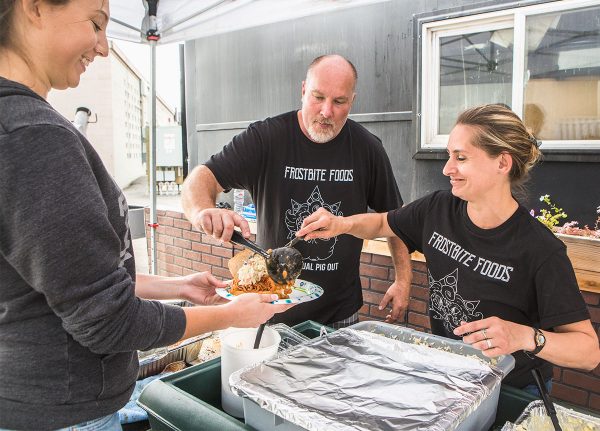
Marshal James and Monique Love, owners of Frostbite Foods, dish up food for Isabella Steward during the restaurant’s first Pig Out event July 15. James and Love opened the Fairbanks restaurant, located near the Gavora Mall, after taking Cooperative Extension Service courses and consulting with an Extension technician. Their family-friendly Pig Out event offered smoked pork, beef brisket, baked beans, potato salad and coleslaw, along with games, prizes and an eating contest.
“She walked us through all of it,” said Love.
Operating as Frostbite Farms, they sold homemade chips, gourmet salsa and fish tacos from a food truck. This past December, they opened a restaurant called Frostbite Foods.
Sitting at a table in their new restaurant, Love said Extension has helped them succeed. “I don’t think we would be doing this without it,” she said.
Donna Rae Faulkner and Don McNamara, who operate Oceanside Farms in Homer, took Extension’s Alaska Growers School courses online in 2013. Experts talked about raising chickens, bees and vegetables, planting seeds, managing risk and farming in rural areas. A practicum followed at Calypso Farms near Ester, and they met several other farmers through the program.
“We got a good background,” said Faulkner. “It really expanded our farm vision.”
The couple already had a few high tunnels — a type of greenhouse made from large hoops — and a community-supported agriculture operation — a small farm serving people who subscribe for its products. Faulkner said the training inspired them to become full-time farmers. They bought a larger farm five miles out the East End Road in 2014. They now have eight high tunnels in which they raise 10 varieties of seed potatoes, as well as vegetables and fruits using organic methods. They distribute vegetables through a CSA and farm stand, and also sell chickens and turkeys.
Faulkner said Extension connects people through networks and brings together expertise at workshops and conferences.
Despite budget challenges due to decreased state funding, Extension Director Fred Schlutt said he expects the service to remain an important resource. Hundreds of publications, most of which are free and available online, remain in demand and cover everything from raising chickens and checking for radon to gardening, cooking and preserving foods.
Schlutt said Extension will rely more on distance-delivery classes offered online or through the university’s videoconference network. Because of different learning styles and schedules, some clients also prefer distance-delivered classes.
Extension will also continue to offer the face-to-face and hands-on courses it has been known for since Lydia Fohn-Hansen’s trip around the territory in 1930.
“That’s our foundation,” said Schlutt. ![]()
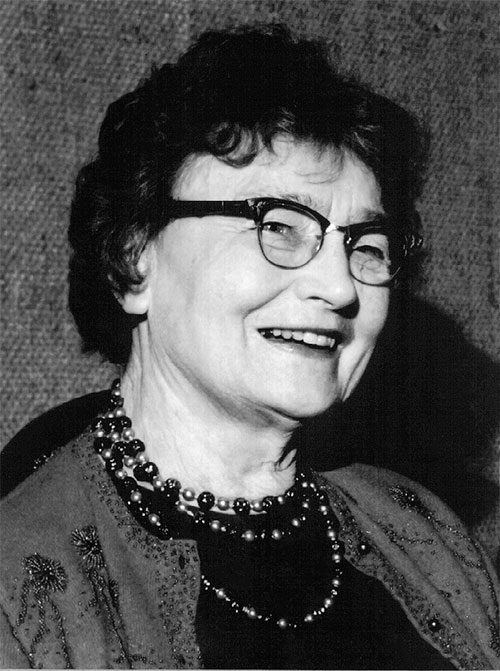
Lydia Fohn-Hansen.
Lydia Jacobson and her friend Martha Park were teaching home economics at Iowa State University in 1925 when they saw a recruiting notice for two home economists at the Alaska Agricultural College and School of Mines.
The school had opened its doors three years earlier. Charles Bunnell, its president, happened to visit Iowa State on a recruiting trip, so Jacobson sat down with him for an interview.
“It was a hot, muggy June day,” she recalled in an interview decades later. “Dr. Bunnell just sat and wiped his brow. We looked at each other for a few moments after the interview. I made up my mind; I wanted to go to Alaska. It would be a jaunt into the unknown. I was hired.”
Both women came as an adventure. Jacobson married miner Hans Fohn-Hansen two years later. In 1930, she left the college home economics department and became one of the Cooperative Extension Service’s first two agents in Alaska. She would stay in the state for nearly 50 years.
Fohn-Hansen became the first Alaskan to earn the U.S. Department of Agriculture’s highest honor, the Superior Service Award, in 1957. Two years later, she became the first woman to receive an honorary doctorate of humanities from the University of Alaska.
During her nearly 30 years with Alaska Extension, the influential agent wrote hundreds of publications and 4-H project books. As Extension’s sole home economist, she toured the state carrying teaching supplies, clothing, bulletins, pressure canners, can sealers, patterns, garden seeds, needles, yarn and often a loom. She also reached out to Alaskans by newsletter and radio programs and initiated the first Extension television programs in 1955.
After retiring in 1959, Fohn-Hansen stayed active in the Fairbanks community until
1975, when she moved to Washington. She died in Lacey, Washington, on Nov. 6, 1986,
at age 95. ![]()



